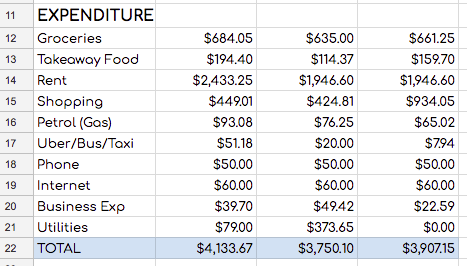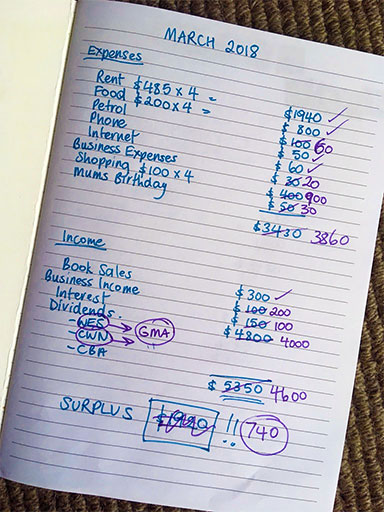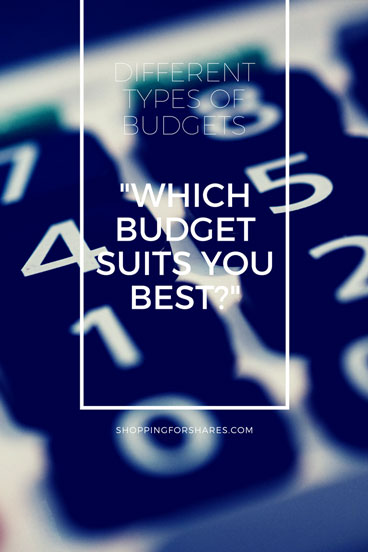Everybody needs a budget.
It’s a bold statement, I know, but it’s the one thing that all financial experts agree on. You have to know how much money is coming in, and how much money is going out.
That’s true whether you’re a business or just a regular person like you or me.
If the key to getting ahead financially is spending less than you earn (another thing that all financial experts agree on), then you have to know what those figures are, for you.
And that means writing it down somewhere.
Yet according to a 2013 Gallup Poll only about a third of people have a budget.
The remaining two thirds either try to budget in their heads or don’t think about it much at all.
Easy come, easy go, right?
Unfortunately, that lack of planning can get people into financial problems without them even realizing it.
Have you ever looked at your credit card statement and asked yourself: Why is it so much? What on earth did I buy?
It’s easy to overspend when you aren’t sure what you have allocated to spend.
By having a budget you’ll see at one glance how much money you have for paying off debts (if you have any), how much you can save (for something you love), and how much you can spend (we all need some discretionary income). Three of the five steps to building long-term wealth.
And it’ll show you how much that daily frappe is really costing you over time. Knowledge is powerful.
Understanding How You Budget – Know Your Budgeting Personality.
Everybody has a different idea of what a budget is. Especially since there are so many different types of personal budgets.
Most agree that’s its a way of understanding your finances. Some see it as constraining or limiting, whereas others enjoy the clarity it brings. Some follow the rules of their preferred method to a T, whereas others tweak and adapt one to suit their circumstances.
The only real criteria are that you need to be able to track your spending, have an idea of what expenses you have coming up, and, of course, how much money you have coming in to pay for it all.
Budgets can be as simple or as complicated as you like.
Don’t let anyone tell you that there is only one way to do a budget.
There are as many styles of budgets as there are personalities. The trick is knowing which style of budgeting is going to work for you.
If you’ve ever given up on a budget, it was probably because it didn’t suit your style. You are far more likely to stick with one if it suits you.
So know thyself and what you are most likely to use.
There are different methods, and I’m going to explore two of the most common ones in just a moment, but first, you need to figure out how you’re going to record your budget.
Spreadsheet/Paper/App – Which Budget Style is Best?
The three most common ways to keep track of your budget are:
- Using a spreadsheet,
- writing it down on paper,
- or using a budgeting app or program.
Most of these can be customized to fit your needs although making your own budget is more flexible than using a set program or app. Neither is better than the other, it’s just what you prefer.
The Spreadsheet Budget
A spreadsheet is what I use. Probably because I’m used to using Excel all those years I worked in an office environment. There’s something I like about letting the spreadsheet perform all the math and all I have to do is enter the details.
If you don’t have Excel use Google Sheets. It’s free and pretty much the same. Plus you can access your budget from your computer or phone making it easy to update whenever you need to.
My spreadsheet is simple. I have two sections.
The first is for income. I input all the money I made for that month which might include book sales, blog advertising, affiliate marketing, dividends and bank interest.

I don’t earn a regular income, it varies month to month. But this works whether you have multiple streams like I do or just one paycheck. Budgeting on a single income makes things a lot easier because you always know what’s coming in. No surprises.
The second section is for my expenses. I have a row for rent, groceries, takeout food, general shopping/entertainment, petrol/gas/transport, internet, phone, household bills (utilities), and so on.

If I need to, it’s easy to add a new row for a one-off miscellaneous expense or even make a new category if it becomes regular.
My budget is always being tweaked as my needs change because of how varied my income and expenses are.
The Paper Budget
If you’re more down with the old school method of using a paper budget, then there are plenty of ways to get started. You could start with a blank page in a new notepad, create your budget in a bullet journal, or use a myriad of downloadable budget sheets you find online.
I do a very quick budget plan on paper before each month starts, forecasting what my expenses and income are likely to be. (I keep exact amounts in my spreadsheet).

Budgeting on paper keeps things simple and uncomplicated. It can be as pretty or practical as you prefer. Plus you don’t have to rely on wifi or battery power to check in.
It’s been proven that physically writing things down helps your brain process the information easier too.
Have a journal or notepad that’s specifically for your finances. It can be any size, but if you plan on writing down all your expenses as you make it, it needs to be small enough to be portable. If you’re just leaving it at home, size isn’t as important.
Using a Budgeting App or Program
I don’t use a budgeting program because most of the ones I’ve used in the past have been too restricting or complicated. Or I’ve just got bored with them and returned to using paper or spreadsheets instead.
But if you’re the type to keep things high tech then an app or program is the way to go.
With some apps/programs, you can link them to your bank accounts and credit cards so that they’ll track your spending for you without you having to do anything. Some also give tips where you are overspending.
In the USA, Mint is considered one of the best budgeting apps. In Australia, Pocketbook is pretty popular. Both are free for the basic version, but you can upgrade to paid to access more features.
I don’t have an opinion on either since I’ve not used them, but if they are something you’d like to try there are plenty of reviews online to help make up your mind.
Okay, so now you’ve decided on the style of budget, let’s look at some of the different budgeting methods.
Different Budgeting Methods – Which one do you like?
Let’s look at two of the more popular methods being used right now.
Reverse Budget (or Backwards Budget)
The backward budget or budgeting in reverse is what I first used when I had a more stable income. It can be done with any income, both fixed and variable.
Instead of calculating your fixed expenses and spending money, and then allocating what’s left to your savings, you take out your savings first. You’ve probably heard it as ‘pay yourself first’. That’s what they are talking about.
Most people who say they can’t save don’t do this. They spend first and then save what’s left over. There’s never any money left over.
With budgeting in reverse, you determine a set amount of money to save each paycheck. That could be 10%, 20% or whatever figure is reasonable for you.
Then once your savings have been taken out (and moved to a high-interest savings account which I’ll talk about in another chapter), you pay for your fixed expenses – that’s your rent/mortgage, food, bills, etc. You can automate this as much as possible to make it easier.
Finally, whatever money is left over is your spending money. Because everything else is already taken care of, you’re free to spend that money as you like.
Savings first, then expenses, blow what’s left.
No guilt, no worries.
Zero Based Budget
The zero based budget is a method where you allocate every cent of your income to something. If you have $4,000 in income each month, you allocate all four grand of that to all your expenses, saving and investing, leaving you with a balance sheet of zero. Income – expenses = 0.
It’s not that you have nothing left at the end of the month (you are still allocating money to saving and investing etc), but that each penny that you earn is accounted for.
This method of budgeting is very similar to how most businesses operate. It’s a simplified personal version of an accounting balance sheet.
The zero based budget takes a little more planning than the backwards budget because you need to allocate all your money somewhere. If your balance sheet doesn’t equal zero you need to figure out why.
Have $50 left over? Allocate it somewhere. Savings, spending, doesn’t matter. Just keep it tracked.
Which is the best budget?
I’ve talked about two of the most popular budgets and how they work. But which is the best one?
The best budget is the one that you’ll use.
The truth is there is no ‘best’ budget. Budgets aren’t (and shouldn’t be) a one-size-fits-all approach. They should help you get ahead with your finances and not constrict you.
If you’re more detailed oriented you might create a zero based budget in your spreadsheet program. If you prefer to get the saving and expenses out of the way first then spend the rest, the reverse budget is probably more your style.
The Hybrid Budget
Personally, I prefer a hybrid approach. The hybrid budget is where you take a little bit of both of the above two budgets taking what works for you and what doesn’t.
Use what works, scrap the rest.
I do track all my spending and expenses but I don’t have categories for everything. Some things are lumped into one group simply called shopping. I also don’t have a set amount for ‘savings’.
My method is to be mindful of my spending and whatever money I have left over at the end of the month is how much I put into savings or investing.
It works for me because I do have money left over. I’m not a big spender. But if I did like spending money, then I’d lean toward a reverse budget (which is what I used to use).
Hack that Budget
The point is that you need to make whichever budgeting method you prefer work for you. Whichever one you choose, make it your own.
Your expenses, income, lifestyle, and circumstances are unlikely to be the same as anyone else.
Your budget is designed to fit your situation. Don’t be afraid to add, remove, change the categories. Whatever works.
Change the layout, color code it, create pie charts, keep it in your back pocket. Modify the look, layout, and method until it fits you.
Don’t settle for a generic budget when you can tailor it to fit your exact needs.
Hack that budget until it works for you.




1 Comment